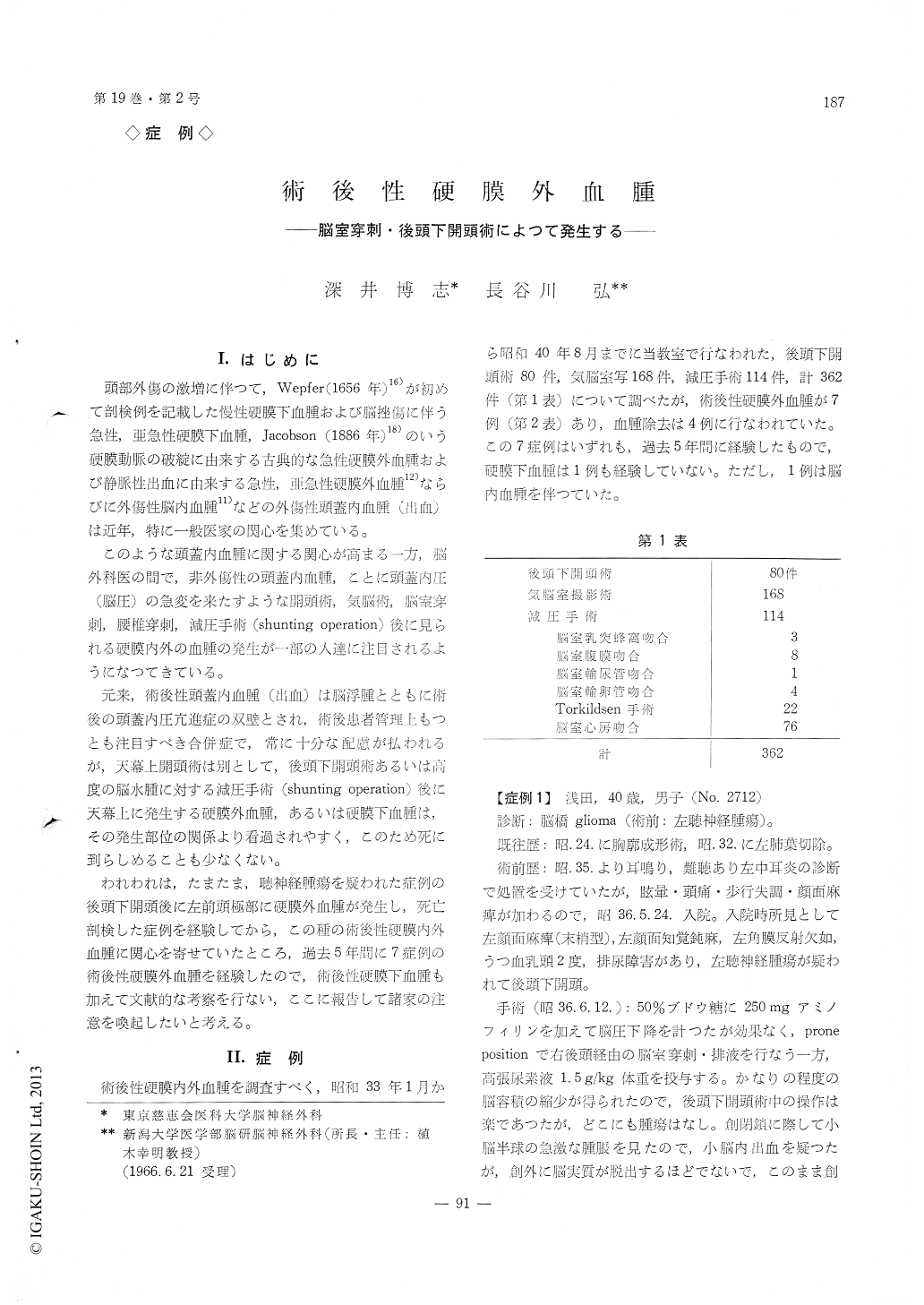Japanese
English
- 有料閲覧
- Abstract 文献概要
- 1ページ目 Look Inside
I.はじめに
頭部外傷の激増に伴つて,Wepfer (1656年)16)が初めて剖検例を記載した慢性硬膜下血腫および脳挫傷に伴う急性,亜急性硬膜下血腫,Jacobson (1886年)18)のいう硬膜動脈の破綻に由来する古典的な急性硬膜外血腫および静脈性出血に由来する急性,亜急性硬膜外血腫12)ならびに外傷性脳内血腫11)などの外傷性頭蓋内血腫(出血)は近年,特に一般医家の関心を集めている。
このような頭蓋内血腫に関する関心が高まる一方,脳外科医の間で,非外筋性の頭蓋内血腫,ことに頭蓋内圧(脳圧)の急変を来たすような開頭術,気脳術,脳室穿刺,腰椎穿刺,減圧手術(shunting operation)後に見られる硬膜内外の血腫の発生が一部の人達に注目されるようになつてきている。
Massive epidural hematoma may occur as a prompt or delayed complication of the surgical procedure of the hydrocephalic states due to congenital hydroceph-alus and subtentorial space occupying tumor. Seven such cases are described with a review of seventeen cases in the literature.
These massive epidural hematomas are probably caused by followings; Sudden release of ventricular fluid both by ventricular tap and by operative pro-cedure in the posterior fossa collapsed the dilated ven-tricles, which pulled upon the bridging vein and pro-moted the detachment of the dura mater. The separa-tion of the dura mater first occurred in the vicinity of the burr-hole. And the tear of the intervening vessels produced the epidural hematomas which creat-ed further dural detachment, and further massive epidural bleeding.
For that reason, attention must be directed to the rare occurence of epidural or subdural hematoma as a complication of the ventricular decompressive proce-dure in the various hyrocephalic states.

Copyright © 1967, Igaku-Shoin Ltd. All rights reserved.


